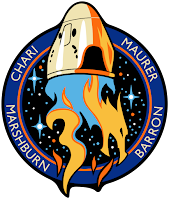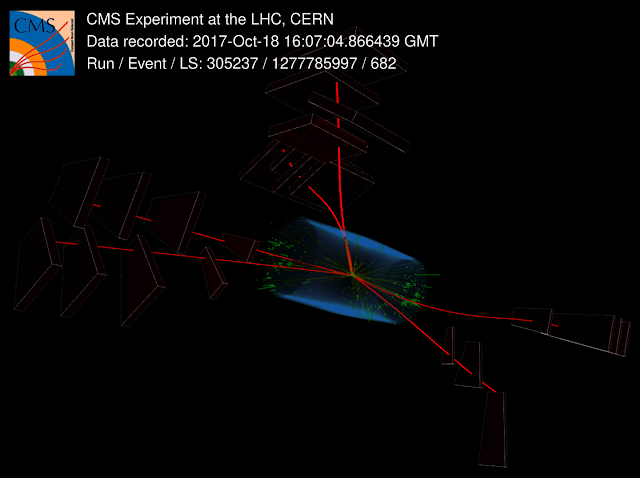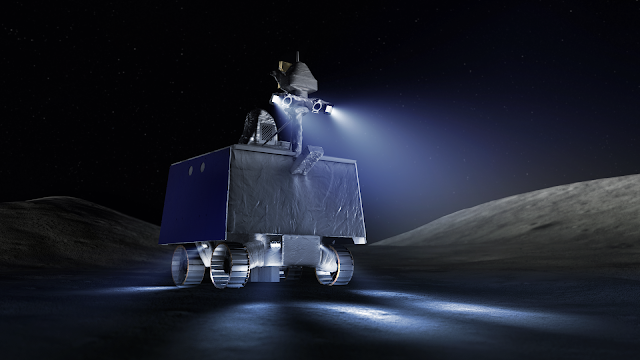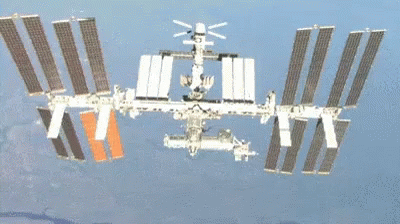ISS - Expedition 66 Mission patch.
Oct 30, 2021
Crew members aboard the International Space Station conducted scientific investigations during the week of Oct. 25 that included assessing how muscle tissue adapts to spaceflight, observing liquid shear flow, and studying more efficient removal of heat. The crew also prepared for the arrival of a SpaceX Crew Dragon, carrying Crew-3 mission astronauts along with additional science experiments, scheduled for Wednesday, Nov. 3.
International Space Station (ISS). Animation Credit: ESA
The space station has been continuously inhabited by humans for 20 years, supporting many scientific breakthroughs. The orbiting lab provides a platform for long-duration research in microgravity and for learning to live and work in space, experience that supports Artemis, NASA’s program to go forward to the Moon and on to Mars.
Here are details on some of the microgravity investigations currently taking place:
Muscles in microgravity
Myotones, an ongoing investigation from ESA (European Space Agency), observes tone, stiffness, and other properties of muscles and assesses the mechanisms involved in muscle adaptation to spaceflight. The work could provide a better understanding of the principles of human resting muscle tone, supporting development of ways to protect muscular function on future space missions and in clinical settings on Earth, such as for sedentary people and those experiencing muscle changes due to normal aging. The crew located and marked measurement points, performed ultrasound scans, and collected blood samples during the week.
Studying shear flow
Image above: The Ring Sheared Drop investigation installed aboard the space station. The device creates shear flow, or a difference in velocity between adjacent liquid layers, allowing researchers to study protein aggregations called amyloid fibrils that may be a factor in development of some neurological diseases. Image Credit: NASA.
On Earth, gravity and interactions between liquids and the containers that hold them can affect results of some scientific research. The Ring Sheared Drop investigation created a device that contains a liquid using surface tension rather than a solid container. The device “pins” a drop of liquid between two rings and rotates one while keeping the other stationary to create shear flow, or a difference in velocity between adjacent liquid layers. The device allows researchers to study protein aggregations called amyloid fibrils, which form a waxy plaque in the brain and could be a factor in development of some neurological diseases. Previous research shows that shear flow plays an important role in the early formation of amyloids. This ability to process materials without containers in microgravity could benefit other experiments, including research on pharmaceuticals. During the week, crew members conducted an experiment run and stowed the equipment.
Taking out the heat
Image above: NASA astronaut Mark Vande Hei works on uninstalling the space station’s Light Microscopy Module, a tool that enabled novel research of microscopic phenomena in microgravity by providing remote digital images and videos across many levels of magnification. The LMM was removed to make way for hardware for the FBCE, which studies two-phase heat transfer in microgravity. Image Credit: NASA.
During the week, crew members worked to remove the Light Microscopy Module (LMM), which has supported research on the space station for more than a decade, from the Fluid Integrated Rack (FIR) in order to install the new Flow Boiling Condensation Experiment (FBCE). On future long-duration space missions, dissipating the heat created by power generation could pose a problem. Current heat transfer systems use a liquid such as water or ammonia to remove heat from one location and move it to another. The liquid remains in the same phase, so these systems are designated single-phase. Two-phase systems use the source of heat to boil the liquid, changing the liquid into another phase, a gas, through vaporization. Such systems would reduce size and weight and remove heat more efficiently than single-phase systems. FBCE collects data on two-phase heat transfer in microgravity, potentially validating simulation tools for designing thermal management systems. This research is a joint effort between the Purdue University Boiling and Two-Phase Flow Laboratory (BTPFL) and the NASA Glenn Research Center.
Picking peppers
Image above: NASA astronaut Mark Vande Hei tends to chile pepper plants in the station’s Advanced Plant Habitat prior to harvesting of the peppers for taste tests as part of the Plant Habitat-04 investigation. Image Credit: NASA.
During the week, crew members got their first taste of chile peppers grown for the Plant Habitat-04 investigation. The investigation involved microbial analysis to improve understanding of plant-microbe interactions in space and the crew’s assessment of flavor, texture, and nutrition of the first peppers grown in space.
Animation above: ESA astronaut Thomas Pesquet photographs, from left, NASA astronauts Mark Vande Hei and Shane Kimbrough, JAXA astronaut Akihiko Hoshide, and NASA astronaut Megan McArthur with chile peppers harvested from the Plant Habitat-04 investigation. Pepper seeds were placed into the APH on July 12, 2021 and astronauts sampled some of the peppers during the week of Oct. 25. Animation Credit: NASA.
Other investigations involving the crew:
- PK-4, a collaboration between ESA and the Russian Federal Space Agency (Roscosmos), studies complex plasmas, which are low-temperature gaseous mixtures of ionized gas, neutral gas, and micron-sized particles. Understanding how plasma crystals form in microgravity could shed light on these common phenomena in space and possibly lead to new research methods, better spacecraft designs, and improvements in industries that use plasmas on Earth.
https://www.nasa.gov/mission_pages/station/research/experiments/explorer/Investigation.html?#id=1192
- Touching Surfaces tests laser-structured antimicrobial surfaces as a method for reducing microbial contamination aboard the space station. Results from this ESA investigation could help determine the most suitable design for antimicrobial surfaces for spacecraft and habitats as well as for terrestrial applications such as public transportation and clinical settings.
https://www.nasa.gov/mission_pages/station/research/experiments/explorer/Investigation.html?#id=8540
- Airborne Particulate Monitor (APM) demonstrates an instrument to measure and quantify the concentration of both small and large particles in spacecraft air. Data could help show the efficiency of current filtration systems and support design of better hardware for environmental monitoring of future space vehicles and habitats, helping to keep crews safe on future missions.
https://www.nasa.gov/mission_pages/station/research/experiments/explorer/Investigation.html?#id=7936
- Flame Design studies the production and control of soot, which can adversely affect combustion efficiency, emissions, and equipment lifetime. Part of the ACME series of studies, this investigation could lead to more efficient and cleaner burner designs.
https://www.nasa.gov/mission_pages/station/research/experiments/explorer/Investigation.html?#id=2059
https://www.nasa.gov/mission_pages/station/research/experiments/explorer/Investigation.html?#id=1651
- Data indicate that some crew members experience accelerated aging-like changes, particularly with respect to their arteries. Vascular Aging, an investigation from the Canadian Space Agency, analyzes ultrasounds of the arteries, blood samples, oral glucose tolerance, and wearable sensors from crew members, which could help assess risks to astronaut cardiovascular health and identify mechanisms to reduce that risk.
https://www.nasa.gov/mission_pages/station/research/experiments/explorer/Investigation.html?#id=7644
- Probiotics, an investigation of the Japan Aerospace Exploration Agency (JAXA), studies whether probiotics or beneficial bacteria can improve immune function on long-duration space missions.
https://www.nasa.gov/mission_pages/station/research/experiments/explorer/Investigation.html?#id=2047
- HRF Veg focuses on the overall health benefits to crew members of having various plants and fresh food available. The investigation uses psychological surveys and crew evaluations of the flavor and appeal of plants that are grown on the space station for other investigations.
https://www.nasa.gov/mission_pages/station/research/experiments/explorer/Investigation.html?#id=8434
Space to Ground: A Halloween Space Ride: 10/29/2021
Related links:
Expedition 66: https://www.nasa.gov/mission_pages/station/expeditions/expedition66/index.html
Myotones: https://www.nasa.gov/mission_pages/station/research/experiments/explorer/Investigation.html?#id=7573
Ring Sheared Drop: https://www.nasa.gov/mission_pages/station/research/experiments/explorer/Investigation.html?#id=7383
Light Microscopy Module (LMM): https://www.nasa.gov/mission_pages/station/research/experiments/explorer/Facility.html?#id=531
Fluid Integrated Rack (FIR): https://www.nasa.gov/mission_pages/station/research/experiments/explorer/Facility.html?#id=351
Flow Boiling Condensation Experiment (FBCE): https://www.nasa.gov/mission_pages/station/research/experiments/explorer/Investigation.html?#id=2064
NASA Glenn Research Center: https://www.nasa.gov/centers/glenn/home/index.html
Plant Habitat-04: https://www.nasa.gov/mission_pages/station/research/experiments/explorer/Investigation.html?#id=8276
ISS National Lab: https://www.issnationallab.org/
Spot the Station: https://spotthestation.nasa.gov/
Space Station Research and Technology: https://www.nasa.gov/mission_pages/station/research/overview.html
International Space Station (ISS): https://www.nasa.gov/mission_pages/station/main/index.html
Images (mentioned), Animations (mentioned), Video (NASA), Text, Credits: NASA/Ana Guzman/John Love, ISS Research Planning Integration Scientist Expedition 66.
Best regards, Orbiter.ch
















































